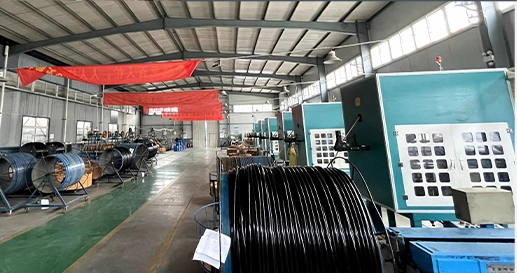brake line in car
Understanding Brake Lines in Cars
Brake lines are a critical component of any vehicle’s braking system. They play a vital role in ensuring that a vehicle can stop safely and efficiently. Understanding the function, types, and maintenance of brake lines can help car owners take better care of their vehicles and enhance their safety on the road.
The Function of Brake Lines
Brake lines are tubes designed to carry brake fluid from the master cylinder to the brake calipers or wheel cylinders at each wheel. When a driver presses the brake pedal, the master cylinder generates hydraulic pressure that forces the brake fluid through these lines. This pressure activates the brakes on the wheels, allowing the vehicle to slow down or come to a complete stop. The hydraulic system relies on the incompressibility of the brake fluid, making brake lines essential for transferring force efficiently.
Types of Brake Lines
There are primarily two types of brake lines rubber and steel. Rubber brake lines are flexible and help absorb vibrations, which makes them easier to install in tight spaces. They are generally used in the areas of the brake system that require some movement, like between the brake calipers and the stationary components of the car.
Steel brake lines, on the other hand, are much more durable and are typically used in the static sections of the brake system. They are resistant to corrosion and provide a more direct response in terms of braking performance. Steel lines can be slightly more difficult to install due to their rigidity, but their strength and longevity often make them the preferred choice for performance vehicles.
brake line in car

Additionally, there are stainless steel braided lines, which combine the flexibility of rubber with the durability of steel. These lines are often used in performance cars due to their ability to resist expansion under pressure, which can lead to a more responsive braking system.
Maintenance of Brake Lines
Regular maintenance of brake lines is essential for vehicle safety. Over time, brake lines can corrode, develop leaks, or become contaminated with moisture, which can lead to brake fluid degradation. This is why it’s crucial for car owners to have their brake systems inspected regularly.
During a routine check, mechanics will look for signs of wear and damage. They will inspect the brake lines for any cracks, bulges, or corrosion, and they will also ensure that the connections are secure. If any issues are found, replacing the compromised lines is imperative to maintain braking efficiency.
Car owners should also pay attention to their brake fluid. It’s important to regularly check the fluid levels and color. Fresh brake fluid is usually clear or slightly yellow, while old or contaminated fluid can appear dark or murky. If brake fluid needs to be replaced, it’s best to have this done by a professional, as they will ensure the entire system is flushed and filled correctly.
Conclusion
In summary, brake lines are a fundamental part of a vehicle’s braking system. Their role in hydraulic pressure transfer is vital for safe stopping. Understanding the different types of brake lines and the importance of regular maintenance can safeguard a vehicle’s performance and ensure the safety of its occupants. Whether you drive a compact car or a high-performance vehicle, paying attention to your brake lines is essential for a smooth and safe driving experience. Regular inspections and proper care can prevent small issues from escalating into serious problems, making it a fundamental aspect of vehicle maintenance. Remember, when it comes to brakes, safety should always be the top priority.
-
Ultimate Spiral Protection for Hoses & CablesNewsJun.26,2025
-
The Ultimate Quick-Connect Solutions for Every NeedNewsJun.26,2025
-
SAE J1401 Brake Hose: Reliable Choice for Safe BrakingNewsJun.26,2025
-
Reliable J2064 A/C Hoses for Real-World Cooling NeedsNewsJun.26,2025
-
Heavy-Duty Sewer Jetting Hoses Built to LastNewsJun.26,2025
-
Fix Power Steering Tube Leaks Fast – Durable & Affordable SolutionNewsJun.26,2025

